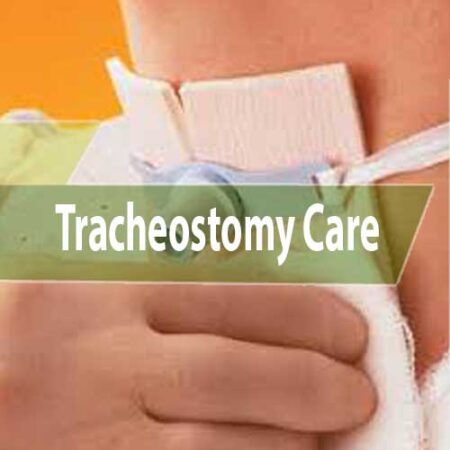ACLS Advanced Cardiac Life Support
After You Complete the Course Please Text 9546089254 For your ECard. On the The Text message please sent your Full name and License number. Your Ecard will be email to you.
ACLS Advanced Cardiac Life Support
AHA’s ACLS Course has been updated to reflect new science in the 2015 American Heart Association Guidelines Update for CPR and Emergency Cardiovascular Care. This course builds on the foundation of lifesaving BLS skills, emphasizing the importance of continuous, high-quality CPR.
This advanced course highlights the importance of high-performance team dynamics and communication, systems of care, recognition and intervention of cardiopulmonary arrest, immediate post-cardiac arrest, acute dysrhythmia, stroke, and acute coronary syndromes (ACS).
Course Features
- Lectures 19
- Quizzes 1
- Duration 6.0 Hours
- Skill level All level
- Language English
- Certificate Yes
- Assessments Self
Basic Airway Management
Part 1: Basic Airway Management
Devices to Provide Supplementary Oxygen
Overview Oxygen administration is often necessary for patients with acute cardiac disease, pulmonary distress, or stroke. Supplementary oxygen administration, ideally, should be titrated to the lowest concentration required to maintain Sp O2 ≥94%. Various devices can deliver supplementary oxygen from 21% to 100% (Table 1) . This section describes 4 devices to provide supplementary oxygen:Nasal cannulaSimple oxygen face mask Venturi mask Face mask with O2 reservoir Whenever you care for a patient receiving supplementary oxygen, quickly verify the proper function of the oxygen delivery system in use.
Table 1. Delivery of Supplementary Oxygen: Flow Rates and Percentage of Oxygen Delivered.
| Device | Flow Rates | Delivered O2 | |||
| (L/min) | (%)* | ||||
| 1 | 21 to 24 | ||||
| 2 | 25 to 28 | ||||
| Nasal cannula | 3 | 29 to 32 | |||
| 4 | 33 to 36 | ||||
| 5 | 37 to 40 | ||||
| 6 | 41 to 44 | ||||
| Simple oxygen face | 6 to 10 | 35 to 60 | |||
| mask | |||||
| Venturi mask | 4 to 8 | 24 to 40 | |||
| 10 to 12 | 40 to 50 | ||||
| Face mask with | 6 | 60 | |||
| 7 | 70 | ||||
| oxygen reservoir | |||||
| 8 | 80 | ||||
| (nonrebreathing | |||||
| 9 | 90 | ||||
| mask) | |||||
| 10 to 15 | 95 to 100 | ||||
| *Percentages are | approximate. | ||||
| Oxygen | Oxygen supply refers to an oxygen cylinder or wall unit that connects to | |||
| Supply | an administration device to deliver oxygen to the patient. When the | |||
| patient is receiving oxygen from one of these systems, be sure to | ||||
| check the following equipment: | ||||
| Oxygen administration device | ||||
| Valve handles to open the cylinder | ||||
| Pressure gauge | ||||
| Flow meter | ||||
| Tubing connecting the oxygen supply to the patient’s oxygen | ||||
| administration device | ||||
| Trained ACLS providers should be sure they are familiar with all | ||||
| emergency equipment before an emergency arises. | ||||
| Nasal | The nasal cannula (Figure 1) is a low-flow oxygen administration | |||
| Cannula | system designed to add oxygen to room air when the patient | |||
| inspires. | ||||
A nasal cannula provides up to 44% oxygen. In this low-flow system, inspired air mixes with room air. The ultimate inspired oxygen concentration is determined by the oxygen flow rate through the cannula and how deeply and rapidly the patient breathes (minute ventilation).
Increasing the oxygen flow by 1 L/min (starting with 1 L/min) will increase the inspired oxygen concentration by approximately 4%.
Indications:
Patients with adequate spontaneous respiratory effort, airway protective mechanism, and tidal volumePatients with arterial oxyhemoglobin saturation <94% Patients with minimal respiratory or oxygenation problems Patients who cannot tolerate a face mask

Figure 1. A nasal cannula used for supplementary oxygen delivery in spontaneously breathing patients.
Simple The simple oxygen face mask delivers low-flow oxygen to the Oxygen patient’s nose and mouth. It can supply up to 60% oxygen with flow Face Mask rates of 6 to 10 L/min, but the final oxygen concentration is highly dependent on the fit of the mask (Table 1). Oxygen flow rate of at least 6 L/min is needed to prevent rebreathing of exhaled CO2 and to maintain increased inspired oxygen concentration.
Venturi Venturi mask enables a more reliable and controlled delivery of Mask oxygen concentrations from 24% to 50% (Table 1). Deliveredoxygen concentrations can be adjusted to 24%, 28%, 35%, and 40% using a flow rate of 4 to 8 L/min and 40% to 50% using a flow rate of 10 to 12 L/min. Observe the patient closely for respiratory depression. Use a pulse oximeter to titrate quickly to the preferred level of oxygen administration.
A Venturi mask can accurately control the inspired oxygen concentration. Use this mask in patients with chronic obstructive pulmonary disease (COPD), who usually have chronic hypercarbia (high CO2) and mild to moderate hypoxemia. Administration of high oxygen concentrations to patients with end-stage COPD may produce respiratory depression because the increase in PaO2 eliminates the stimulant effect of hypoxemia on the respiratory centers.
Never withhold oxygen from patients who have respiratory distress and severe hypoxemia simply because you suspect a hypoxic ventilatory drive. If oxygen administration depresses respiration, support ventilation.
Face Mask The face mask with oxygen reservoir is a partial rebreathing mask
With that consists of a face mask with an attached reservoir bag (Figure
Oxygen 2). A face mask with oxygen reservoir (nonrebreathing mask)
Reservoir provides up to 95% to 100% oxygen with flow rates of 10 to 15 L/min
(Table 1). In this system a constant flow of oxygen enters an
attached reservoir.

Figure 2. A face mask with oxygen reservoir used for supplementary oxygen delivery in spontaneously breathing patients. Use of a face mask with a reservoir is indicated for patients who Are seriously ill, responsive, spontaneously breathing, have adequate tidal volume, and require high oxygen concentrations May avoid endotracheal intubation if acute interventions produce a rapid clinical effect (eg, patients with acute pulmonary edema, COPD, or severe asthma) Have relative indications for advanced airway management, but maintain intact airway protective reflexes, such as gag and cough Have relative indications for advanced airway management, but have physical barriers to immediate intubation, such as cervical spine injury Are being prepared for advanced airway management
always requires close monitoring. Suctioning devices should be immediately available. Additionally, prolonged exposure to high inspired oxygen concentration could be detrimental when PaO2 is high (ie, >300 mm Hg) and arterial oxyhemoglobin saturation is 100%. When feasible, the minimum supplementary oxygen needed to maintain arterial oxyhemoglobin saturation ≥94% should be used.
-
Airway Management
- Lecture 1.1 Basic Airway Management Preview
- Lecture 1.2 Bag-Mask Ventilation Locked
-
Part 2: Advanced Airway Management
- Lecture 2.1 Advanced Airway Adjuncts Locked
- Lecture 2.2 Advanced Airway Adjuncts: Esophageal-Tracheal Tube Locked
- Lecture 2.3 Advanced Airway Adjuncts: Endotracheal Intubation Locked
- Lecture 2.4 Insertion of ET Tube Into One Bronchus Locked
- Lecture 2.5 Esophageal Detector Devices Locked
-
ACLS Core Rhythms
- Lecture 3.1 Recognition of Core ECG Arrest Rhythms Locked
- Lecture 3.2 Recognition of Selected Nonarrest ECG Rhythms Locked
- Lecture 3.3 Recognition of Ventricular Tachyarrhythmias Locked
-
Defibrillation
- Lecture 4.1 Defibrillation Locked
-
Access for Medications
- Lecture 5.1 Introduction Locked
- Lecture 5.2 Intravenous Access Locked
- Lecture 5.3 Intraosseous Access Locked
-
Acute Coronary Syndromes
- Lecture 6.1 Acute Coronary Syndromes Locked
-
Human, Ethical, and Legal Dimensions of ECC and ACLS
- Lecture 7.1 Rescuer and Witness Issues Locked
- Lecture 7.2 Legal and Ethical Issues Locked
- Lecture 7.3 Providing Emotional Support for the Family Locked
-
QUIZ
- Quiz 8.1 ACLS PRE-TEST EXAM Locked
-
ACLS Video
- Lecture 9.1 ACLS Video Locked




